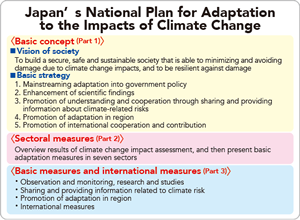Current topics
Collaboration is the Key to Protected Areas Management
-First APAP workshop in Ishigaki on collaborative management in protected areas-
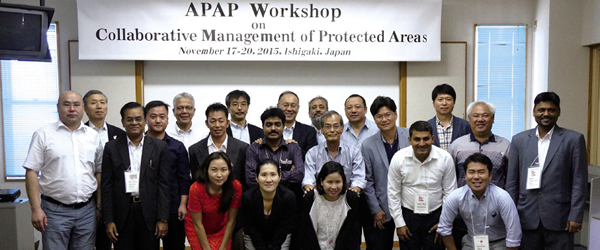
Participants of 1st APAP Workshop on collaborative management of protected areas
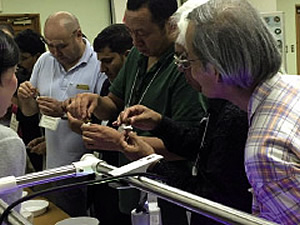
Participants experiencing eco-program of coral plantation
Asia has been known for its rich and beautiful nature, which serves as a home to globally important biodiversity hotspots as well. The region's natural resources, however, have been under significant pressures from rapid population growth and accelerating economic development. In response, Protected Areas (PAs) have played an increasingly important role in conserving biodiversity and providing ecological services that underpinned the development.
Asia Protected Areas Partnership (APAP) was established last year to facilitate collaboration across the region towards improved PAs management in accordance with Sendai Charter, the agreement of the first Asia Parks Congress (APC).
During 16-20 November 2015, first APAP workshop was hosted by the Ministry of the Environment, Japan in Ishigaki-city, Japan. The workshop highlighted collaborative management, an approach to involve stakeholders in PAs management. Participants, from all of eight APAP member countries, have shared their experiences on the ground and discussed to identify the keys to the success, while learning from the collaboration schemes to protect coral reefs in Ishigaki as well.
The chair of the event emphasized the uniqueness of APAP workshop; "It is not ad hoc gathering but a part of learning process that was preceded by and followed by further learning of their home PAs." At the closing session, deep appreciation for the host and expectations for another learning event were expressed by participants.
About APAP
Asia Protected Areas Partnership (APAP) was launched in 2014, in response to the call made at the first Asia Parks Congress (APC) in Sendai. APAP serves as an informal platform for policy makers, park managers and academics to facilitate best practices and innovative solutions to the challenges facing the region's protected areas.
More Information:
Impacts of Climate Change: Our Adaptation Plan and the Future
Building a Society Resilient to Climate Change
Japan's cabinet approved a decision on the "National Adaptation Plan" in November 2015.
Climate Change Impact Assessment
The Central Environment Council assessed impacts of climate change in Japan, and formulated a Climate Change Impact Assessment Report in March 2015. The areas of high significance and high urgency, the Council pointed out, encompassed broad fields.
National Adaptation Plan
The "National Plan for Adaptation to the Impacts of Climate Change (National Adaptation Plan, or NAP)" has been established based on the March 2015 Climate Change Impact Assessment Report. The NAP, while considering a long-term perspective to the end of the 21st century, covers approximately the next 10 years.
The following five basic strategies were set to minimize or avoid damage from the impacts of climate change, and create a secure, safe, and sustainable society that can quickly recover from those impacts.
- Mainstreaming adaptation into government policy
- Enhancement of scientific findings
- Promotion of understanding and cooperation through sharing and providing information on climate-related risks
- Promotion of adaptation in region
- Promotion of international cooperation and contribution
To enforce these basic strategies, the Government will effectively promote sectoral measures and basic, international measures in collaboration with related government ministries.
Aid to Developing Countries
Based on the NAP, the Ministry of the Environment of Japan (MOE) provides a wide range of support to other countries, especially developing countries. This includes bilateral cooperation on climate change impact assessment and adaptation planning, and personnel training through international networks such as the Asia Pacific Adaptation Network (APAN).
The MOE disseminates the adaptation plan in Japan and abroad, and promotes implementation of the NAP in collaboration with related governmental ministries.
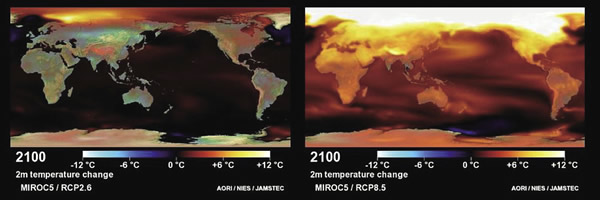
A temperature change projection example for 2100 (Left figure: Low emission scenario (RCP2.6), Right figure: High emission scenario (RCP8.6))
Source: University of Tokyo, the National Institute for Environmental Studies, Japan Agency for Marine-Earth Science and Technology (JAMSTEC), Ministry of Education, Culture, Sports, Science and Technology (MEXT)
Progress of Decontamination Efforts in and outside Fukushima Prefecture

Rice harvesting in decontaminated paddy fields (Namie-machi, Fukushima Prefecture)
Five years have passed since the accident at TEPCO's Fukushima Daiichi Nuclear Power Station. Following the Act on Special Measures concerning the Handling of Radioactive Pollution pertaining to the accident, the Ministry of the Environment of Japan (MOE) has been advancing the decontamination and contaminant disposal process outside the station.
The MOE has been directly implementing decontamination over the 11 municipalities designated as the Special Decontamination Area in Fukushima Prefecture (the area within a 20 km radius from the Plant, and the area estimated with annual cumulative radiation exposure dose of 20 mSv or higher for one year after the accident). Evacuation order was issued for the areas. Decontamination has been completed according to the plan over six municipalities entirely, and the residential sections of one municipality. The remaining work is scheduled to be completed by March 2017. After the decontamination, re-establishing social infrastructure, and consultation with the residents, the evacuation order has been lifted in three municipalities since April 2014. The municipality-led decontamination is also progressing in the Intensive Contamination Survey Area (94 municipalities inside and outside Fukushima Prefecture). As Fukushima Prefecture in particular is seeing a massive amount of soil removed in the process, MOE has also made efforts to establish an Interim Storage Facility that will enable centralized management. MOE is also conducting research and development of technologies of soil volume reduction and recycling.
With the effects from the progressing decontamination work and physical attenuation of radioactive material, the air dose rates have been steadily decreasing in and around Fukushima (see diagram below). Decontamination has been contributing to the steady progress of reconstruction of the affected areas. For example, even in the evacuation zone, rice cultivation has been gradually restarted following the decontamination of paddies, and the safety of the products has been confirmed by the inspections on all bags of rice.
We want to take this opportunity to extend our appreciation for all the support and advice provided from overseas since 2011. We hope you visit Fukushima to see the recovery efforts and achievements.
More Information:
Decrease in the Air Dose Rates at and around Fukushima
The air dose rates have been decreasing by decontamination work and radioactive decay.
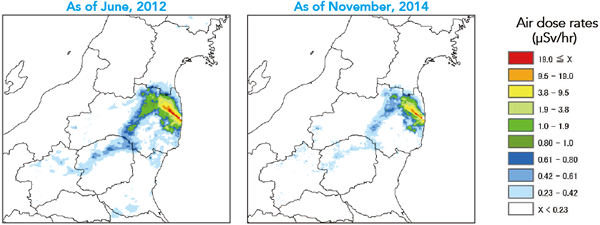
Note: Made by MOE based on the NRA'S "monitoring information of environmental radioactivity level" (Monitoring information of environmental radioactivity level | NRA)



